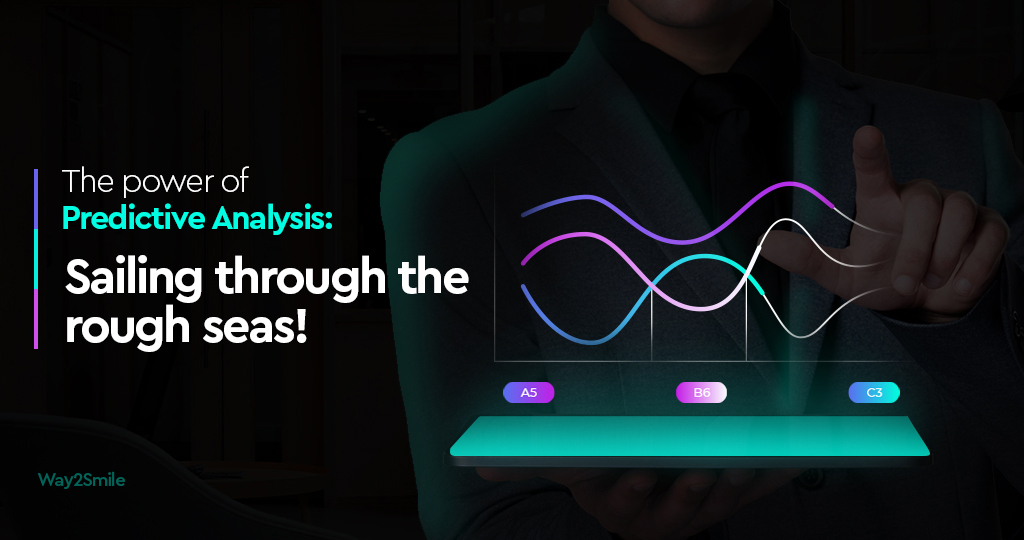A single person creates approximately 1.6MB per second! It is not a surprise that we create enormous data as our dependency on "smart" products is at an all-time high. The purpose of smart products is to generate, understand, analyze, accumulate, and store user data to help serve the customer better. Technologies like swarm learning are enabling IoT devices to become smarter than ever! User data helps businesses to understand more about the customers, but there is a flip side to it. Businesses and organizations that leverage data engineering solutions are at the risk of drowning in a data swamp. A data swamp costs companies a fortune, and if not corrected, the size of the swamp will only increase in the future. Enter the picture- Advanced data analytics! Advanced data analytics help businesses to effectively accumulate, organize, process, extract, and store information from the data swamps. Many data engineering consulting firms are adopting revolutionary technologies like AI, ML, VR, etc., creating an efficient data accumulation system. It helps organizations escape from the risk of drowning in data swamps while making the most out of the unorganized and raw data mountains! Many large-scale organizations understand the importance of business intelligence solutions. There are 4 types of advanced data analytics.
- Descriptive analytics
- Diagnostic analytics
- Predictive analytics
- Prescriptive analytics
What is predictive analytics?
Analytics is a broad term and has different branches according to the context of a situation. Here, predictive analysis refers to the analysis of huge data lakes that lets the system process tons of historical data and identify patterns. These patterns are then studied and interpolated to predict the future of the business or organization.
Importance of predictive analysis
One word- It's scientific! The scientific approach is highly valued while forming decisions or devising strategies because of its dependency on facts and data rather than faith and instincts. It's good to rely on instincts when you are unsure, but if you have data in front of you, it is better to go with the data approach than using your instincts. Again, a data approach is not 100% fail-proof, but depending on data is as close as we could get to an ideal situation. Businesses, enterprises, organizations, and governments need to be extra careful before forming a decision as they are under pressure to be future-proof! The decision-making body of such larger structures has the responsibility for the employees and also everyone depending on them. Many e-commerce companies are leveraging big data statistics to stay ahead in the market. In such scenarios, the credibility of these decisions plays a vital role in controlling the risk exposure. And what's more credible than basing your decisions on facts? Many business intelligence companies in Dubai are changing the B2B game by providing advanced data engineering solutions.
How predictive analytics helps to make better business decisions?
"If you don't think about the future, you cannot have one."—John Galsworthy.
This statement is particularly true for businesses! The need for businesses to think about the future is very high, given the huge amount of resources upon which it's built. Predictive analytics help businesses in the following ways.
- Preparing a business for the demand.
- Content personalization.
- Customer behaviour.
- Product development.
Preparing a business for demand
A business that doesn’t understand the supply-demand factors of the market cannot stay on the game for long. Understanding the demand for a product can help a great deal in resource management. In a predictive analytics model, the system analyzes the previously accumulated multi-dimensional data. Analyzing these data is an important step as it identifies patterns among these huge datasets. These patterns can say a lot about the business like key performing areas, the time where the demand is at its peak, demand distribution among different locations, etc. For example, Amazon leverages predictive analytics to identify the product traffic during specific times of the year to equip their warehouses with high-demand products.
Content personalization
Content personalization can make or break your business, particularly if you are in the service industry. Take Netflix, for instance. The level of content personalization that Netflix offers makes it one of the most powerful OTT platforms in the world. This level of content personalization can happen only through extreme predictive analytics. Predictive analytics can also help you pitch your product to the right crowd at the right time. It can also be a great way to entice high-value customers for better conversion. Targeting the high-value customers by customizing the offers according to their previous interactions has proven to be a great help for businesses.
Customer behaviour
Understanding customer behaviour is a crucial step of any business as the present market itself is called a customer-centric market! Businesses have been pooling their resources to understand customer behaviour better. Right from product development to marketing to testing, understanding customer behaviour is a must! Using predictive analytics, the level of precision in identifying these critical customer behaviours can be increased significantly. Nailing the precision can make a huge impact when the operations are large-scale!
Product development
Developing a minimum viable product seems to be the hottest approach towards building an innovative product. The very nature of an MVP is to collect user feedback and adapt accordingly. Predictive analytics can intensify this feedback mechanism by extracting crucial data from the users. This data can play a crucial role in building a high-functioning product. If the data is preferably from the target audience, then the chances of your product being successful is very high. IT Consulting companies in Dubai is providing cutting-edge solutions to build a high-functioning, dynamic MVP leveraging efficient data engineering solutions.
Wrapping this up
Predictive analytics can change your entire game, but it is also important to understand that this model works on historical data. If the quality of the historical data is poor, then the prediction might not be effective or precise. To leverage predictive analytics, an organization must first establish an airtight data accumulation system. Combining data analytics with technologies like Artificial Intelligence and Machine Learning can help a great deal in visualizing the data. A solid enterprise data analytics strategy can provide the very edge over your competitors.







